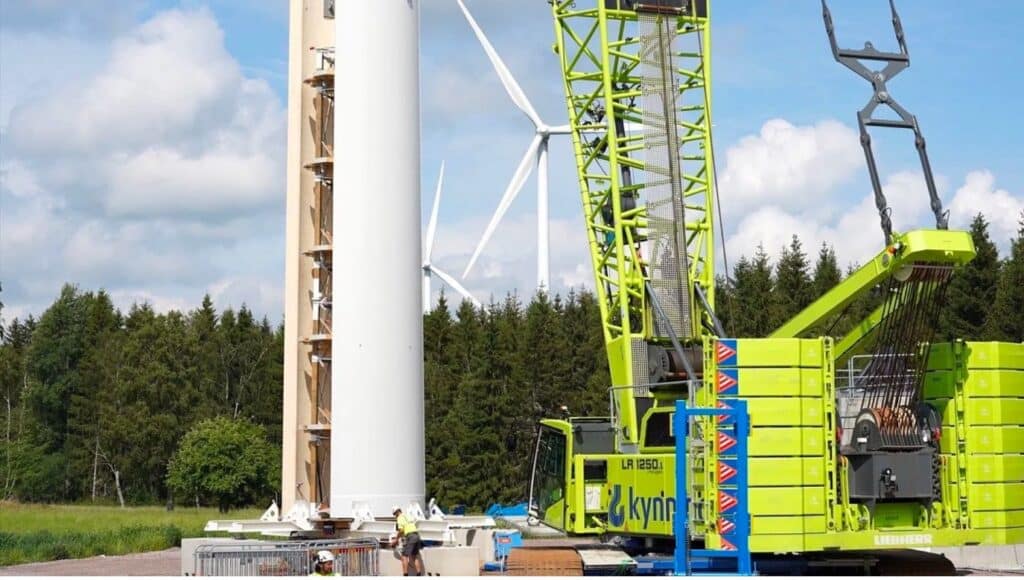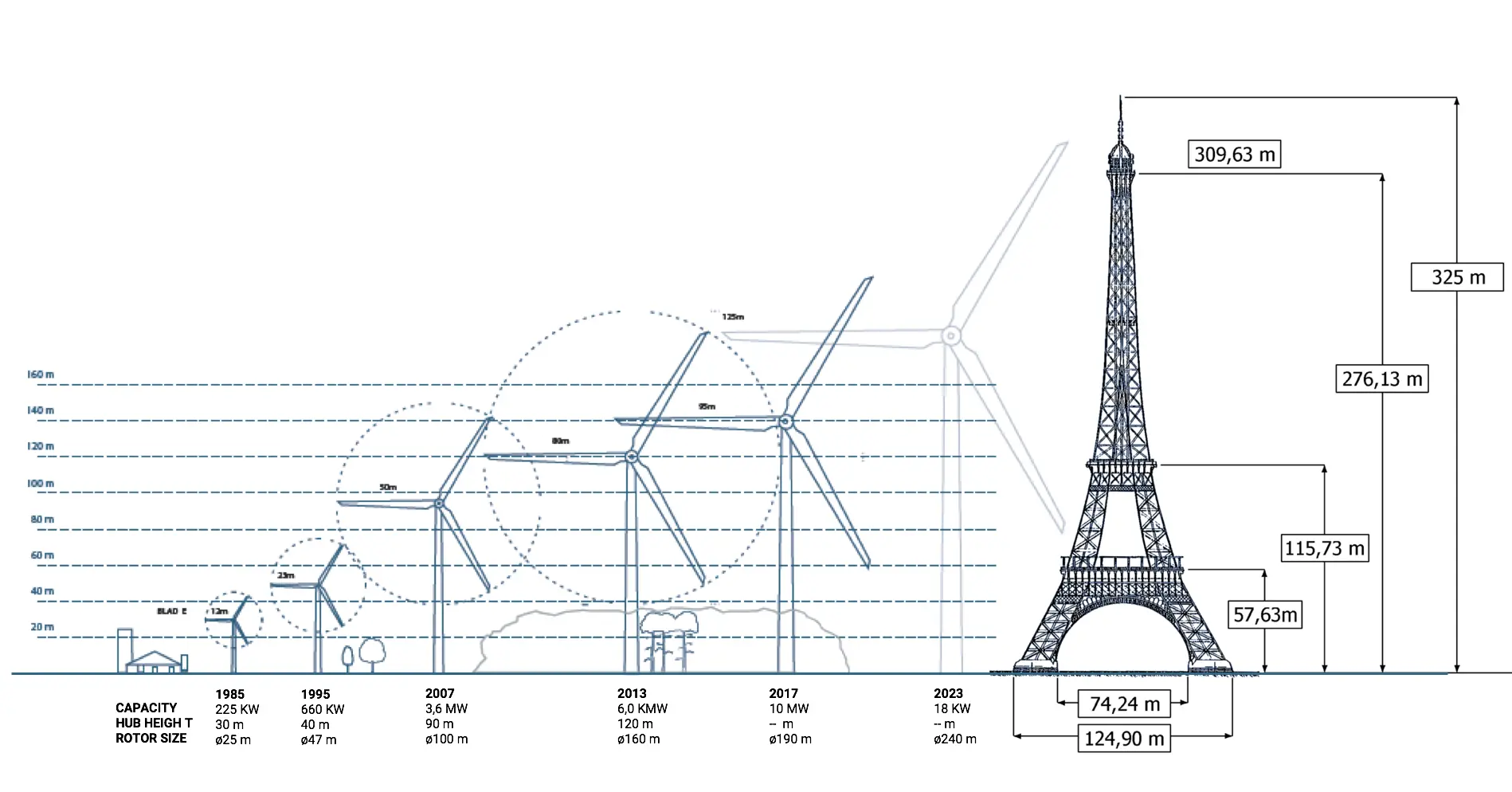Wind turbine towers built from wooden modules made out of laminated veneer lumber.
Manufacture processes of traditional steel wind turbine towers are high emitters of carbon. A Swedish wood technology company called Modvion proposes by switching to a wooden tower, these emissions can be lowered significantly and the material itself supports carbon storage.
A wooden tower is therefore a carbon-negative component, storing more CO₂ than is emitted during production.
Wooden modules also offer a better strength-to-weight ratio than steel towers and can be easily transported due to their modular design.
Modvion is constructing a 105m-high wind turbine wooden tower that will be installed in the municipality of Skara, Sweden.
It is the world’s tallest of its type and is being built for Varberg Energi, a Swedish energy utility.
It will be used to mount a 150m-high, 2MW turbine produced by Danish wind turbine maker Vestas.
This is the first time that a wooden tower will be used for a Vestas wind turbine. It will become operational by the end of 2023.
The tower is being built at Modvion’s factory in Gothenburg from modules made out of laminated veneer lumber, that will be assembled four at a time and each has seven sections.
Modvion CEO Otto Lundman stated: “This is the start of a new green industry. By using Nordic raw materials and Swedish technology, we can enable climate-neutral wind power for a growing global market.
“Wood enables building higher towers at a lower cost, which makes wind power more efficient since winds are stronger and more stable higher up. That gives you more electricity from each permit to build wind turbines.”






